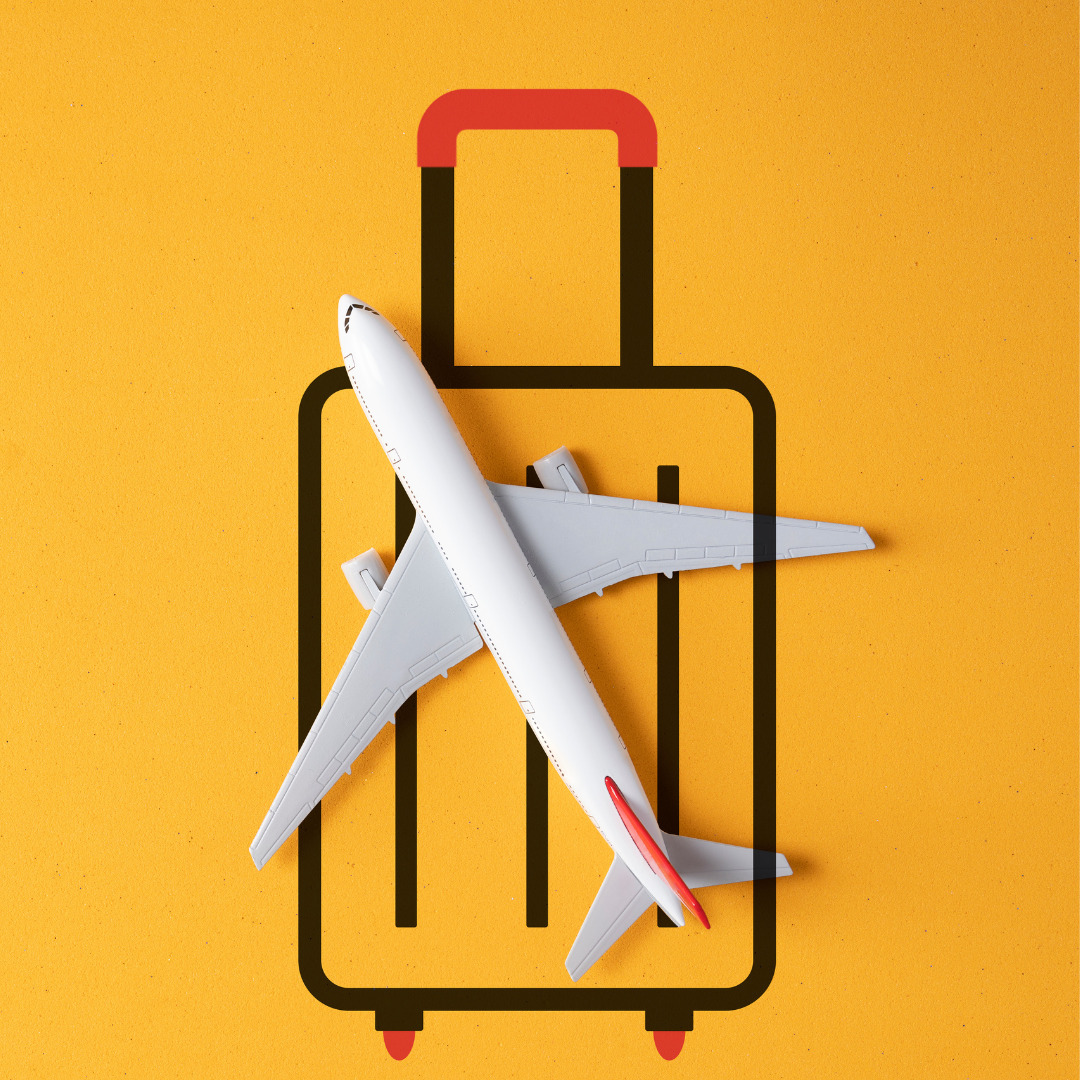托運行李所產生的二氧化碳排放量超越了 156 個國家
目次
1:全球托運行李所產生的二氧化碳排放量
2:不攜帶任何行李時的二氧化碳減排效果

1:全球托運行李所產生的二氧化碳排放量
到目前為止,我們已經分析了在飛往日本的航班上不攜帶任何行李時能減少二氧化碳排放量的効果。而這一次我們將向各位解說全世界的航空業攜帶行李時所產生的二氧化碳排放量。
根據「Project Drawdown」的調查,2018年全球航空業所產生的二氧化碳排放量約佔全球排放量的2.6%。同時世界銀行的數據顯示,2018 年全球二氧化碳排放量為 342.9 億噸(2019 年為 343.4 億噸),因此航空業所產生的的二氧化碳排放量為 8.9 億噸。並且根據國際航空運輸協會 (IATA) 的數據顯示,2019 年航空業所產生的二氧化碳排放量為 9.1 億噸。
同樣根據國際航空運輸協會統計,2019年全球的航空客運距離(收益旅客公里)為8兆6,800億公里。 因此如果所有飛機上每位乘客都有攜帶20公斤行李的情況,托運行李所產生的二氧化碳排放量則高達1億451萬噸。 佔了2019 年全球二氧化碳排放量 343.4 億噸的 0.30%。 同時也佔了2019年全球溫室氣體的二氧化碳換算排放量462.9億噸中的0.23%。
我們使用 ECTA(European Chemical Transport Association)「Guidelines for Measuring and Managing CO2 Emission from Freight Transport Operations 2011(2011 年貨運業務二氧化碳排放測量和管理指南)」中提供的數據,計算攜帶托運行李(20 公斤)時所產生的二氧化碳排放量。 用於計算的空運貨物運輸量(噸/公里)二氧化碳排放強度單位為0.602kgCO2/tkm。

2:不攜帶任何行李時的二氧化碳減排效果
各位可能會認為托運行李所產生的二氧化碳排放量只佔了全球排放量的0.3%,並沒有很大的影響,但1億451萬噸的二氧化碳排放量已經超越了比捷克(9629萬噸)、比利時(9301萬噸)等156個國家所產生的排放量。 不攜帶任何行李所減少的排放效果十分有效。
Annual CO2 emissions (million tonnes、2019)
World 34,344 100.0% High income 12,126 35.3% OECD members 11,611 33.8% China 10,707 31.2% United States 4,818 14.0% India 2,456 7.2% Russian Federation 1,704 5.0% Japan 1,082 3.1% Germany 657 1.9% Global aviation industry 914.0 2.7% Worldwide checked baggage (20 kg) 104.5 0.30% Czechia 96.3 0.28% Belgium 93.0 0.27% Kuwait 92.7 0.27% Qatar 92.0 0.27% Chile 91.4 0.27% Bangladesh 90.7 0.26% Colombia 81.0 0.24% Oman 76.0 0.22% Romania 73.9 0.22% Turkmenistan 72.9 0.21% Morocco 71.5 0.21% Austria 64.8 0.19% Israel 62.7 0.18% Greece 60.0 0.17% Belarus 57.7 0.17% Libya 56.8 0.17% Peru 56.8 0.17% Korea, Dem. People's Rep. 56.0 0.16% Singapore 47.4 0.14% Hungary 46.4 0.14% Serbia 46.0 0.13% Portugal 44.6 0.13% Finland 40.7 0.12% Ecuador 39.3 0.11% Bulgaria 39.1 0.11% Caribbean small states 37.9 0.11% Switzerland 37.4 0.11% Myanmar 36.7 0.11% Norway 36.0 0.10% Ireland 35.8 0.10% Azerbaijan 35.5 0.10% Sweden 35.0 0.10% New Zealand 34.0 0.10% Bahrain 33.3 0.10% Slovak Republic 31.1 0.09% Tunisia 29.9 0.09% Denmark 29.7 0.09% Lebanon 28.0 0.08% Dominican Republic 27.2 0.08% Cuba 25.9 0.08% Syrian Arab Republic 25.7 0.07% Angola 25.2 0.07% Jordan 24.6 0.07% Sri Lanka 23.8 0.07% Mongolia 23.1 0.07% Bolivia 22.3 0.07% Kenya 22.3 0.06% Bosnia and Herzegovina 21.1 0.06% Sudan 20.6 0.06% Ghana 20.0 0.06% Guatemala 19.3 0.06% Lao PDR 18.7 0.05% Ethiopia 18.4 0.05% Trinidad and Tobago 17.2 0.05% Croatia 16.5 0.05% Cambodia 16.2 0.05% Slovenia 13.6 0.04% Nepal 13.4 0.04% Panama 13.3 0.04% Tanzania 12.4 0.04% Zimbabwe 11.8 0.03% Lithuania 11.7 0.03% Yemen, Rep. 11.1 0.03% Cote d'Ivoire 10.8 0.03% Senegal 10.6 0.03% Honduras 10.2 0.03% Estonia 10.2 0.03% Georgia 10.1 0.03% Kyrgyz Republic 10.1 0.03% Luxembourg 9.5 0.03% Cameroon 9.4 0.03% Tajikistan 9.4 0.03% Moldova 8.9 0.03% Jamaica 8.4 0.02% North Macedonia 8.3 0.02% Costa Rica 8.2 0.02% Paraguay 8.2 0.02% El Salvador 7.8 0.02% Papua New Guinea 7.6 0.02% Latvia 7.6 0.02% Mozambique 7.5 0.02% Benin 7.3 0.02% Congo, Rep. 7.3 0.02% Botswana 7.3 0.02% Cyprus 7.2 0.02% Brunei Darussalam 7.0 0.02% Zambia 6.8 0.02% Uruguay 6.5 0.02% Armenia 6.2 0.02%
資料來源:世界銀行、國際航空運輸協會 (IATA)、ECTA、本公司計算
備註:摘錄了二氧化碳排放量高的國家以及因不攜帶任何行李而減少二氧化碳排放量的國家
根據「比較86種減低二氧化碳排放計畫,與搭乘飛機時不託運行李的減碳效果」的分析顯示,飛往日本的航班上不攜帶任何行李時能每年減少137 kg的二氧化碳排放量(平均旅行次數為 1.8 次)。 因現時全球的托運行李所產生的二氧化碳排放量為1億451萬噸,將此數據除以全球每年45.43 億名的旅客數,每個人單程所產生的二氧化碳排放量為 23 kg。 而來回旅程所產生的二氧化碳排放量為 46 kg,並通過不攜帶任何行李上飛機的情況下,每位旅客每年能減少二氧化碳排放量的效果(在每年一次旅行的情況下)是「Project Drawdown」所列出的減排措施排名中(按世界人口計算)的第26位。
Annual CO2 emissions reduction per capita (kg)
SOLUTION World population OECD poluration High income population 1 Reduced Food Waste 377.2 2,152.9 2,377.3 2 Plant-Rich Diets 333.8 1,905.5 2,104.1 3 Family Planning and Education 293.7 1,676.1 1,850.8 4 Refrigerant Management 243.6 1,390.3 1,535.2 5 Tropical Forest Restoration 232.1 1,324.6 1,462.6 6 Onshore Wind Turbines 200.1 1,142.1 1,261.2 7 Alternative Refrigerants 182.1 1,039.5 1,147.8 8 Utility-Scale Solar Photovoltaics 174.0 993.3 1,096.8 9 Clean Cooking 133.7 763.4 842.9 10 Distributed Solar Photovoltaics 113.6 648.3 715.9 11 Silvopasture 113.3 646.6 714.0 12 Methane Leak Management 110.1 628.4 693.9 13 Peatland Protection and Rewetting 108.3 617.9 682.3 14 Tree Plantations (on Degraded Land) 93.9 536.2 592.0 15 Temperate Forest Restoration 82.8 472.4 521.7 16 Concentrated Solar Power 76.7 437.9 483.5 17 Perennial Staple Crops 69.6 397.5 438.9 18 Insulation 65.6 374.1 413.1 19 Regenerative Annual Cropping 64.4 367.8 406.2 20 Tree Intercropping 64.1 365.6 403.7 21 LED Lighting 61.6 351.5 388.2 22 Managed Grazing 58.5 333.8 368.5 23 Multistrata Agroforestry 56.5 322.6 356.2 24 Conservation Agriculture 54.6 311.6 344.1 25 Abandoned Farmland Restoration 53.2 303.6 335.2 Reduced 20kg luggage 46.0 26 Recycling 44.2 252.0 278.3 27 Offshore Wind Turbines 43.6 248.6 274.5 28 Improved Rice Production 42.0 239.6 264.6 29 Building Automation Systems 40.7 232.3 256.5 30 Public Transit 40.1 229.2 253.0 31 Efficient Trucks 39.0 222.6 245.8 32 Carpooling 38.6 220.4 243.4 33 High-Performance Glass 37.6 214.6 236.9 34 Indigenous Peoples’ Forest Tenure 37.0 211.4 233.4 35 Bamboo Production 32.8 187.3 206.8 36 Alternative Cement 32.8 187.3 206.8 37 Electric Cars 32.6 186.3 205.8 38 Smart Thermostats 29.5 168.1 185.6 39 Efficient Ocean Shipping 28.6 163.5 180.5 40 Waste to Energy 26.7 152.5 168.4 41 District Heating 26.3 150.3 166.0 42 Geothermal Power 26.2 149.6 165.2 43 Methane Digesters 25.7 146.4 161.7 44 Forest Protection 23.7 135.0 149.1 45 Efficient Aviation 22.5 128.7 142.1 46 Biogas for Cooking 19.8 113.1 124.9 47 Improved Cattle Feed 18.8 107.5 118.7 48 Recycled Metals 18.4 104.8 115.8 49 High-Efficiency Heat Pumps 17.2 98.3 108.5 50 Perennial Biomass Production 17.0 97.3 107.4 51 Seafloor Protection 16.2 92.4 102.1 52 Reduced Plastics 16.0 91.5 101.0 53 Solar Hot Water 14.5 83.0 91.6 54 Grassland Protection 14.3 81.5 90.0 55 Improved Manure Management 14.2 81.3 89.7 56 Nuclear Power 13.5 77.1 85.2 57 System of Rice Intensification 12.4 70.5 77.9 58 Walkable Cities 12.1 68.8 76.0 59 Nutrient Management 11.8 67.4 74.4 60 Bicycle Infrastructure 11.6 66.4 73.3 61 Telepresence 11.3 64.2 70.9 62 Biomass Power 11.2 63.7 70.4 63 Macroalgae Protection and Restoration 11.1 63.5 70.1 64 Seaweed Farming 10.7 60.8 67.2 65 Recycled Paper 9.7 55.5 61.2 66 Electric Trains 8.1 46.5 51.3 Reduced 20kg luggage 46.0 46.0 67 Small Hydropower 7.0 40.1 44.3 68 Hybrid Cars 6.9 39.2 43.2 69 Electric Bicycles 5.9 33.8 37.3 70 Biochar Production 5.8 33.1 36.5 71 Sustainable Intensification for Smallholders 5.8 33.1 36.5 72 Bioplastics 5.7 32.4 35.7 73 Ocean Power 5.4 30.9 34.1 74 High-Speed Rail 5.4 30.7 33.8 75 Coastal Wetland Protection 5.1 29.2 32.2 76 Farm Irrigation Efficiency 4.8 27.5 30.4 77 Composting 4.8 27.5 30.4 78 Improved Fisheries 4.3 24.6 27.1 79 Low-Flow Fixtures 4.0 22.6 25.0 80 Coastal Wetland Restoration 3.2 18.5 20.4 81 Water Distribution Efficiency 2.6 14.8 16.4 82 Green and Cool Roofs 2.3 12.9 14.2 83 Recycled Plastics 2.2 12.6 14.0 84 Improved Aquaculture 2.1 12.2 13.4 85 Dynamic Glass 1.4 8.3 9.1 86 Micro Wind Turbines 0.4 2.2 2.4
Source: Project Drawdown, Japan Tourism Agency, International Air Transport Association (IATA), ECTA, our calculations.
Note: Calculated according to Scenario 1 of Project Drawdown.
從2022年Booking.com的調查中可以看到,全世界旅人中有81%、日本旅人中有73%認為「對自己而言實踐永續旅行是非常重要的事」。
更重要的是,如果你不攜帶任何行李,並在當地租用所需的東西,就能更輕鬆享受旅行。既不用打包行李和擔心運輸時行李有任何的遺失或損傷,回家後也不需要收拾。「輕鬆旅行」對於長者、身心障礙者、帶小孩的家長等各種行動不便的人來說,具有恢復旅行次數的效果,也有助於消除「旅行落差」的作用。 請各位考慮使用本公司的旅行租賃服務。